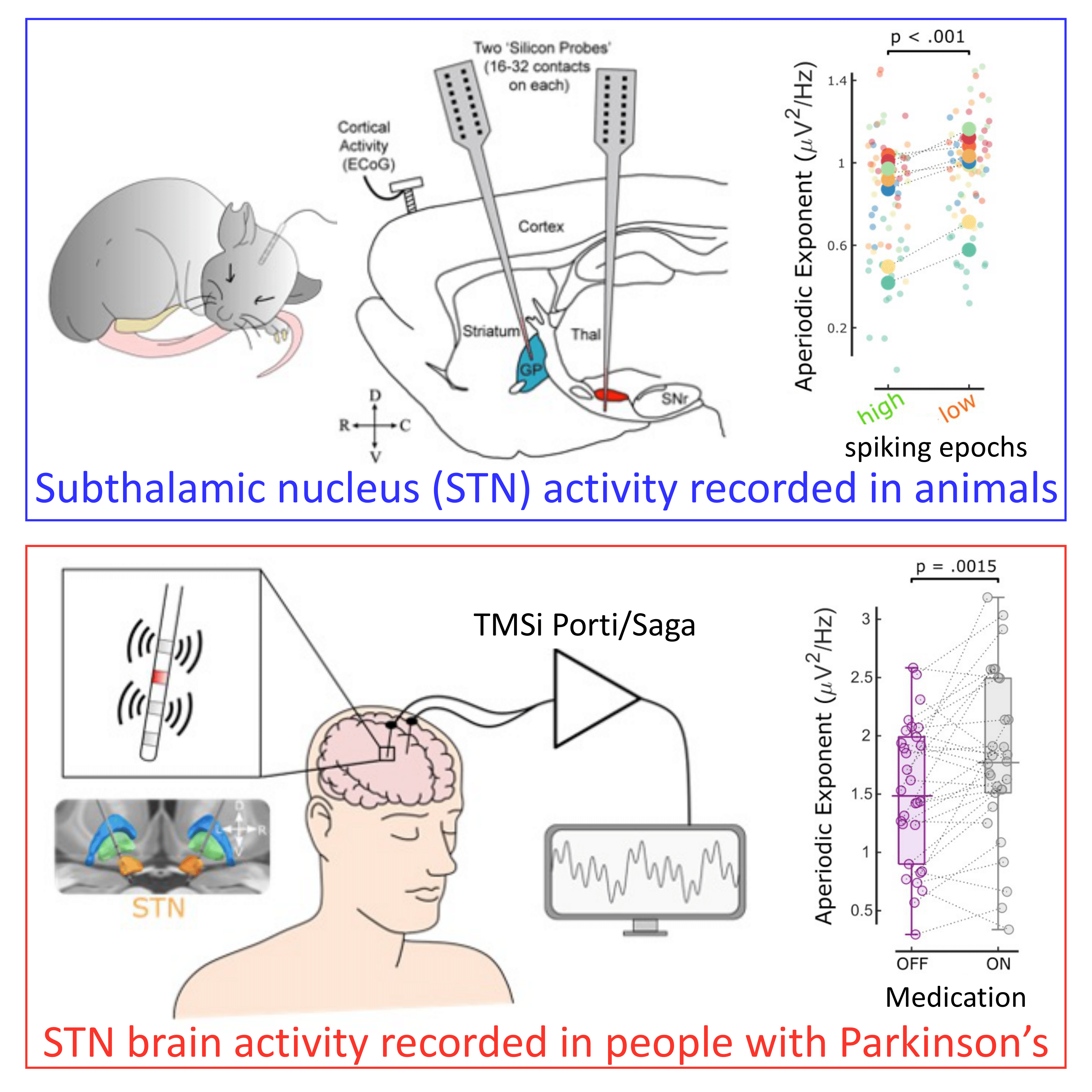The aperiodic exponent of subthalamic field potentials reflects excitation/inhibition balance in Parkinsonism.
Can we use recordings from deep brain stimulation electrodes to better understand the balance of brain cell activity in people with Parkinson's? This work suggests we can. We first studied rats to find a measurement that reflected the activity balance, and then showed in people that this measurement also separates different medication and stimulation conditions. This measurement could be used to improve stimulation for therapy.
Periodic features of neural time-series data, such as local field potentials (LFPs), are often quantified using power spectra. While the aperiodic exponent of spectra is typically disregarded, it is nevertheless modulated in a physiologically relevant manner and was recently hypothesised to reflect excitation/inhibition (E/I) balance in neuronal populations. Here, we used a cross-species in vivo electrophysiological approach to test the E/I hypothesis in the context of experimental and idiopathic Parkinsonism. We demonstrate in dopamine-depleted rats that aperiodic exponents and power at 30-100 Hz in subthalamic nucleus (STN) LFPs reflect defined changes in basal ganglia network activity; higher aperiodic exponents tally with lower levels of STN neuron firing and a balance tipped towards inhibition. Using STN-LFPs recorded from awake Parkinson's patients, we show that higher exponents accompany dopaminergic medication and deep brain stimulation (DBS) of STN, consistent with untreated Parkinson's manifesting as reduced inhibition and hyperactivity of STN. These results suggest that the aperiodic exponent of STN-LFPs in Parkinsonism reflects E/I balance and might be a candidate biomarker for adaptive DBS.

2023. eLife, 12:e82467
2023. Neurobiol Dis, 178:106019.
2022. iScience, 25(4):104028.
2022. NPJ Parkinsons Dis, 8(1):88.
2024. Transl Psychiatry, 14(1):103.